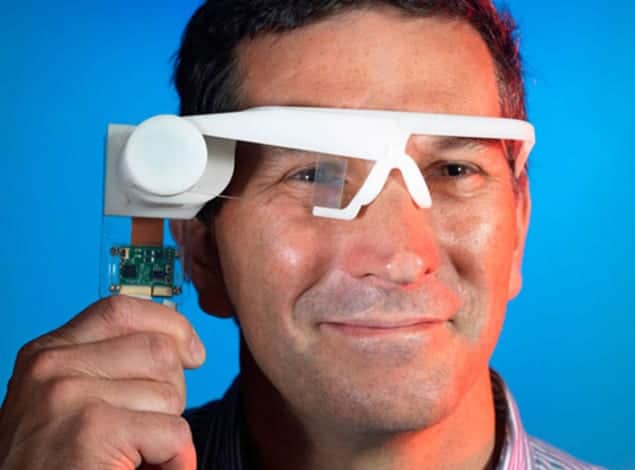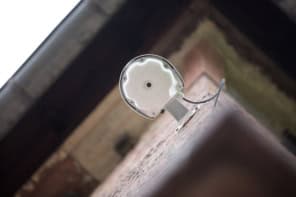
A new optical gadget that uses holographic technology looks set to transform wearable, augmented-reality displays. That is the claim of engineers in the UK, who have developed a device that could be incorporated into a variety of existing technologies and allows users to overlay full-colour, 3D, high-definition images onto their normal line of sight, so that it interacts with their surroundings. This, the researchers say, sets it apart from similar augmented-reality (AR) technologies such as Google Glass and virtual-reality devices such as Oculus Rift.
Immersive information
In recent years, immersive augmented-reality or virtual-reality mobile or computer displays have become more commonplace. From greeting cards that play videos when scanned by a mobile phone to futuristic windshield displays in luxury cars, the line between digital and analogue visual information is being blurred by new technologies. But developing AR displays that seamlessly integrate digital information into the everyday environment can be a challenge. Particularly difficult is overlaying high-quality colour images that are still transparent enough not to obscure the field of vision.
Now, developers at a UK-based company, TruLife Optics, together with researchers from the adaptive-optics group at the National Physical Laboratory (NPL) near London, have overcome this overlay problem. They have created an optical component that consists of a waveguide (a rectangle of high-quality glass or plastic that acts as the lens) that contains two postage-stamp-sized holograms overlaid onto it. TruLife Optics is a spin-off from Colour Holographic – a company with expertise in producing holograms.
Earlier this month, TruLife Optics launched its glass waveguide/hologram systems, which can be bought by AR device developers for about £360. The devices are not standalone products and must be incorporated into an eyewear frame, along with a microdisplay, which provides the input image.
Reflecting waveguides
The waveguide itself is about 10 cm long, 3 cm wide and 2.8 mm thick, including the two holograms. The holograms provide a convenient way of routing light in a controllable manner. In the team’s device, incoming images from a microdisplay are routed into the first hologram, where the light is turned 90° through the length of the waveguide, via total internal reflection. Then the light hits the second hologram, where it is turned a further 90° so it is projected into the human eye. This means that the overlaid transparent images are projected from the centre of the device into the eye and are perfectly focused.
Using holograms also means a component can be created that is, at most, 2.8 mm thick, making it easy to incorporate into any eyewear. The researchers claim that the image projected “does not lose any fidelity or resolution and is focused to accommodate the eye, thus avoiding the need to squint or move your eye to see the information”. TruLife Optics also plans on making bespoke components that match the requirements of individual developers. The team has a “developer zone” to help buyers and a hackspace, where it encourages customers using its product to discuss possible improvements to the device and contribute towards its evolution.
Simon Hall, a senior researcher at NPL who was key in the development of the component, told physicsworld.com that in the years ahead, the team hopes to produce workable demonstrators for curved waveguides (curved lenses for glasses) and be able to carry out aberration correction to allow the use of prescription lenses. “Adaptive systems allow the image focal plane to follow the accommodation state of eyes. We hope that in five years’ time a number of AR systems available in the market would incorporate our technology,” says Hall. “There are multiple specialist applications of this technology…medical and industrial applications could also be produced.”
Real-time applications
Indeed, there could be a range of applications for the device, including entertainment and educational technologies plus displays built into car windscreens and shop windows. Hall also describes more specific applications such as an infrared version that could be developed for firefighters or eyewear worn by doctors during surgery. With the latter, Hall describes a scenario where a colleague in a distant city or country could view and advise on a surgical procedure in real time. The team also envisions that its technology could be useful for experimental scientists and engineers who could overlay a schematic plan on equipment they are working on.



